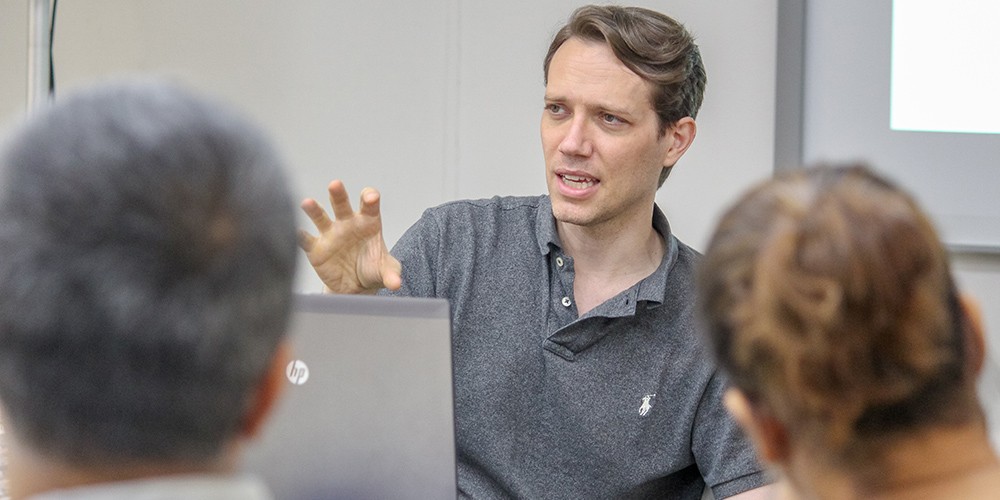Training Policymakers on River Management

With a view to providing senior government stakeholders new perspectives on managing river basins in India, Columbia Global Centers | Mumbai organized a series of lectures and trainings from April–May, 2018. The sessions were led by Dr. Anthony Acciavatti, Adjunct Assistant Professor, Graduate School of Architecture, Planning and Preservation, Columbia University, who spent over a decade mapping the Ganga River Basin.
“While there is a lot of work happening on the Ganga, we need to appreciate such in-depth research. We must find ways to incorporate such mapping techniques into our planning for the river,” noted Rajiv Ranjan Mishra, Director, National Mission for Clean Ganga (NMCG), Ministry of Water Resources, River Development and Ganga Rejuvenation. He was speaking at the inauguration of ‘The River Ganga: India’s Iconic Water Machine’ at the American Center in New Delhi, the second in a series of exhibitions organized by the Center as part of its Water Access and Management initiative to promote informed decision making on the sustainable management of water.
The exhibition offered a comprehensive visual profile of the river basin from Gaumukh to Allahabad, consisting of original photographs, maps and drawings. Some of the low-cost innovations devised by Dr. Acciavatti during the course of his fieldwork were also on display. This included the Surface Water Accumulation Sleeve, a prosthetic device that is made up of two parts. The first part - made from repurposing a packaging tape dispenser with a GPS unit and a mobile phone - attaches to one’s arm. The second part is a telescopic antenna - commonly used for an AM/FM radio - held in one’s hand. By unrolling the packaging tape, patting it down to collect surface soils, and using the GPS unit and phone to note where they were collected, he was able to plot out how the riverbed expands and contracts before and after the monsoon. Dr. Acciavatti was subsequently invited by the NMCG, the key government agency which manages environmental pollution and the rejuvenation of the river basin, to present his mapping methodologies and field techniques to policymakers and senior water specialists.
The Center also took the exhibition to the National Institute of Hydrology, Roorkee - the apex institute undertaking scientific work on hydrology. Visitors included hydrologists and engineers from IIT Roorkee, the Roorkee College of Engineering, and the Roorkee Institute of Technology. “The drawings displayed here show how the monsoon, the flow of the Ganga, and groundwater are all interrelated,” said Acciavatti while presenting the exhibition, reiterating the importance of an integrated approach to water management in the Ganga River Basin.
In partnership with Lal Bahadur Shastri National Academy of Administration in Mussoorie, the Center further organized a training session for mid-career Indian administrators. Participants included officers who have held the positions of District Magistrates and Municipal Commissioners. By drawing upon his training in multiple disciplines, including architecture, cartography, photography, and in the history of science and technology, Dr. Acciavatti was able to highlight the importance of using inter-disciplinary approaches in water management. As a result, the training helped provide an in-depth understanding of the environmental heritage of the Ganga, the dynamic conflicts of water use, and the changes to the landscape due to the monsoon and human intervention.